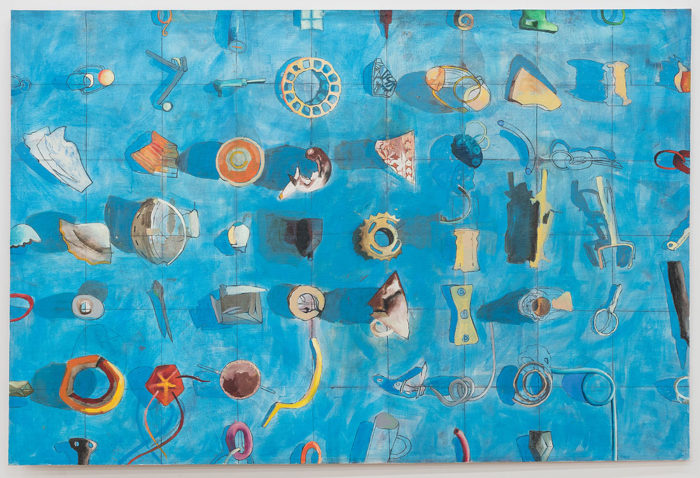Magdalena Gryska
Two Hundred Things Nobody Needs
acrylic, canvas, 120 x 180 cm, 2020

Zenon had always been interested in degraded, abandoned objects, originating from the landfill of contemporary civilisation. In his perception of the world, the boundary between an 'object of art' and an 'object of non-art' was blurred. An inspiration for a painting I have made and am presenting at the exhibition was the artist's small sketch, a note with the title Two Hundred Things Nobody Needs. I decided to paint the piece for him, but also – in his place... Perhaps in his head, it was an idea for creating an installation, an object, although I do not know.
Thanks to the piece, there is space here for displaying a usual gesture, bringing to mind a ritual of everyday life; to quote Jan Mirosław Bereza, a Benedictine, the author of Sztuka codzienna życia [The Everyday Art of Life], who claims: “there is... no other life but everyday life, therefore our happiness depends on the manner of performing precisely such activities.” Simple things are the Most Truthful.
Zenon attended to every abandoned fragment of human activity, a trace of human existence. He picked it up, simultaneously respecting, sanctifying and, most importantly, subjecting to interpretation. To him, art became the artist's very consciousness, which was, at the same time, the source of meaning and aesthetic emotion; not merely a product, which is an end result of a creative act.
I remember those objects, found in the vicinity of the post-German house in Neu Kunersdorf, where, in the ground, he discovered artefacts, relics, destructs, slivers of a by-gone reality. He eagerly dug through every nearby hill suggesting an existence of a backyard garbage heap. Later, he would often tell me a story of found objects. He collected them in a box, where they awaited the right moment. I hope that this precise right moment have been embodied in my work Dwieście rzeczy nikomu niepotrzebnych [Two Hundred Things Nobody Needs].
Kosobudki, 16.08.2020